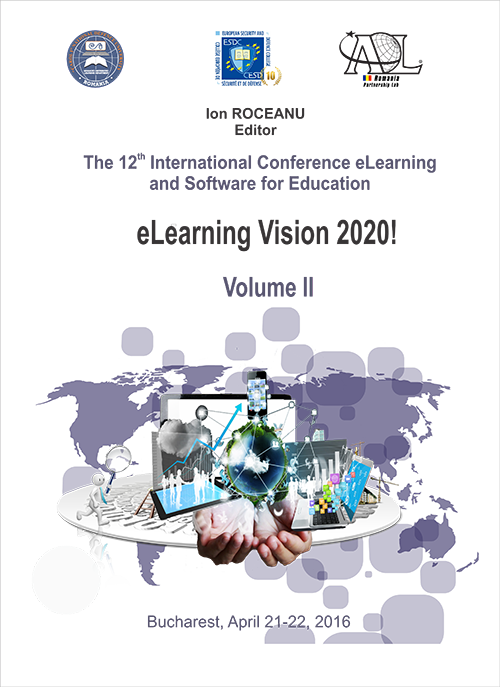BLENDED LEARNING – A MODERN WAY TO LEARN GERMAN
BLENDED LEARNING – A MODERN WAY TO LEARN GERMAN
Author(s): Andra Sybil StefanSubject(s): Foreign languages learning, Sociology of Education
Published by: Carol I National Defence University Publishing House
Keywords: foreign language teaching; German; adult education; e-learning;
Summary/Abstract: The present article is the result of teaching activity for German language with blended learning and from the feedback received from the students at the end of the module. The course addresses adults, (18 to 50 years old), with higher education, either undergraduates or graduates, and who learn German as at least the second foreign language (after English) or even the third language (after English and French). We will try to highlight the advantages of this system, which provide us with some of the modern ways to continuously form our students to be "up-to-date" with the ever more sophisticated requests of modern societies, to come out as winners from "the competition" we engage in every day, but also some disadvantages, which, once known, can be avoided by the teacher who organizes the course while structuring the next course. The methods and ways to combine the activities organized in the classroom, where there is direct interaction with the students, with the online part, where the contact with the student must be very well organized, offering him/her the possibility to make progresses after every "lesson", represent the focal points of our material. In order to obtain this goal, we have taken into account several aspects: the structure of the curriculum, its organization on the one hand and modality of sending information - presentation, explaining, practicing, and imbedding the information - and evaluation, on the other hand. The data storage and the enrichment of the database, with every course, also represent important elements, contributing to the diversity of the material that will be provided to the students. The flexibility in building the material for practicing and testing seemed to be an important aspect for obtaining a content as diverse as possible and we will largely refer to the solutions found, showing the advantages this time also, but also the shortcomings of some of them as well and the solutions we have used. At the same time, we will prove how the course can be prepared, starting from some versions of the course, that we have applied, mentioning in each case the results obtained.
Journal: Conference proceedings of »eLearning and Software for Education« (eLSE)
- Issue Year: 12/2016
- Issue No: 02
- Page Range: 233-238
- Page Count: 6
- Language: English

